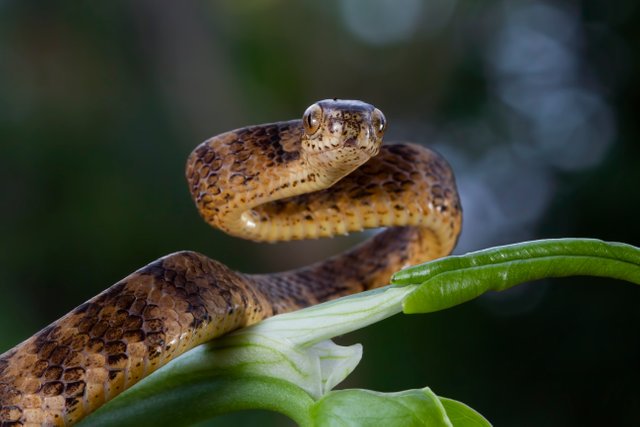**Unveiling the Russell's Viper: Deadly Beauty of the Snake Kingdom**

In the realm of serpents, few command as much respect and fear as the Russell's viper (Daboia russelii). Known for its potent venom and striking appearance, this viper holds a significant place in both natural history and human culture. From its physical attributes to its ecological role, exploring the world of the Russell's viper reveals a creature that is as captivating as it is dangerous.
Physical Characteristics
The Russell's viper is a robust snake, typically ranging from 3 to 5 feet in length, although some specimens can grow even larger. It sports a distinctive pattern of alternating dark brown or black dorsal blotches bordered by a white or yellowish band. This pattern provides effective camouflage in its natural habitat of grasslands, shrublands, and forests across South Asia.
One of its most striking features is its triangular-shaped head, adorned with large, highly mobile fangs capable of injecting venom deep into its prey or potential threats. These fangs are part of the viper's sophisticated venom delivery system, which plays a crucial role in its survival and hunting strategies.
Venom and Lethality
The venom of the Russell's viper is a potent cocktail of proteins and enzymes designed to immobilize and digest its prey. It is primarily hemotoxic, causing severe damage to tissues, blood vessels, and organs. Envenomation by this snake can lead to symptoms ranging from intense pain and swelling to bleeding disorders and even organ failure if untreated promptly.
In regions where the Russell's viper is endemic, such as India, Sri Lanka, Bangladesh, and parts of Southeast Asia, snakebite incidents involving this species pose a significant public health challenge. However, advancements in medical treatment, including antivenom therapy, have greatly improved outcomes for those bitten.
Ecological Role and Behavior
As an apex predator in its habitat, the Russell's viper plays a crucial role in controlling populations of small mammals and birds. Its diet primarily consists of rodents, birds, and occasionally other small reptiles, which it ambushes with lightning-fast strikes. Despite its reputation for aggression when threatened, the Russell's viper generally prefers to avoid humans and will retreat if given the chance.
Cultural Significance and Conservation
Beyond its ecological role, the Russell's viper holds cultural significance in many South Asian societies. In some regions, it is feared and respected, often featuring in folklore and traditional medicine. However, habitat loss and persecution due to misunderstandings have led to declines in some populations. Conservation efforts focus on educating local communities about the importance of these snakes in ecosystems and promoting safer coexistence.
Conclusion
The Russell's viper stands as a testament to the complexity and diversity of the natural world. From its awe-inspiring appearance to its formidable adaptations, this snake embodies both the beauty and the dangers present in the animal kingdom. Understanding and respecting creatures like the Russell's viper not only enriches our knowledge of biodiversity but also underscores the importance of conservation efforts to ensure their survival in the face of evolving environmental challenges.